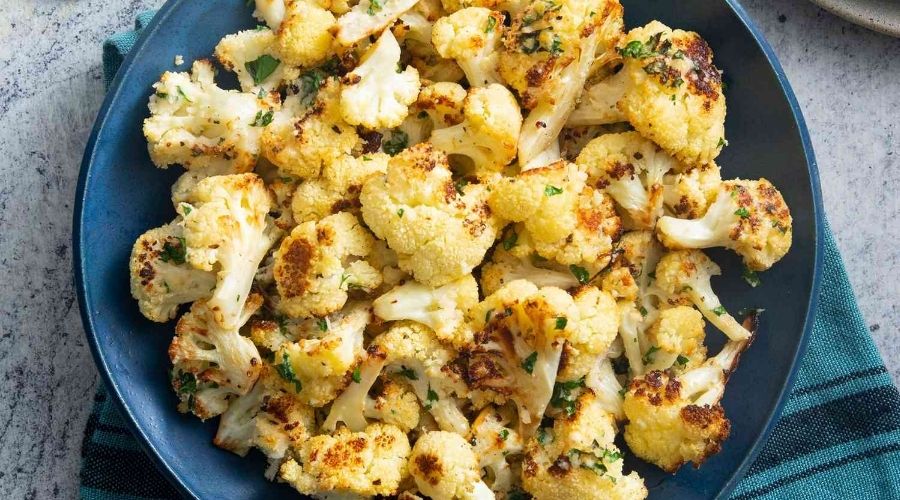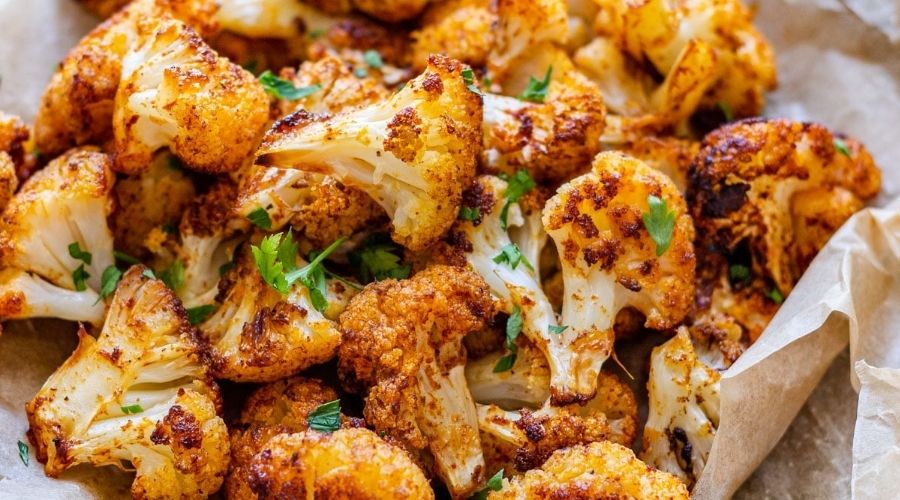Storing cooked cauliflower properly is essential for preserving its flavor, texture, and nutritional value.
Whether you’ve made a large batch for meal prep or have leftovers from dinner, knowing how to store this versatile vegetable can save you time and reduce food waste.
In this article, we will explore the best practices for storing cooked cauliflower, including the right containers to use, tips for reheating, and how to identify spoilage.
With the right techniques, you can enjoy delicious, fresh-tasting cauliflower whenever you’re ready to eat!
Why Storing Cooked Cauliflower Properly Matters
Storing cooked cauliflower properly is essential for maintaining its flavor, texture, and nutritional value.
This versatile vegetable is not only a favorite in various dishes, from stir-fries to casseroles, but it is also packed with vitamins and minerals.
When cooked cauliflower is not stored correctly, it can quickly spoil, leading to food waste and potential health risks.
Proper storage methods help preserve the quality of the cauliflower, allowing you to enjoy its delicious taste and health benefits over several days.
Additionally, storing cooked cauliflower in airtight containers reduces the risk of contamination from other foods and prevents it from absorbing unwanted odors.
By ensuring that your cooked cauliflower is stored correctly, you can enjoy its freshness and nutritional benefits for longer, making it a worthwhile addition to your meal prep routine.
How to Store Cooked Cauliflower

Storing cooked cauliflower properly is key to maintaining its flavor, texture, and nutritional value.
Here’s a complete guide on how to store cooked cauliflower effectively:
1. Cool Down Before Storing
Allow the cooked cauliflower to cool to room temperature before storing. This prevents condensation inside the storage container, which can lead to spoilage.
Avoid leaving it out for more than two hours to minimize the risk of bacterial growth.
2. Choose the Right Container
Select an airtight container for storing cooked cauliflower.
Glass containers with secure lids are ideal as they do not retain odors and are microwave-safe.
If using plastic containers, make sure they are BPA-free.
3. Portion It Out
Consider dividing the cooked cauliflower into smaller portions.
This makes it easier to reheat only what you need, reducing waste and maintaining the quality of the remaining cauliflower.
4. Label and Date
Use labels and a permanent marker to note the date on the storage container.
This helps you keep track of how long the cauliflower has been stored and ensures that you use it within a safe timeframe, typically 3 to 5 days in the refrigerator.
5. Refrigeration
Store the airtight container in the refrigerator. Cooked cauliflower can generally be kept for up to 3 to 5 days.
Make sure your refrigerator is set to 40°F (4°C) or lower to ensure food safety.
6. Freezing for Long-Term Storage
If you need to store cooked cauliflower for a longer period, freezing is an excellent option.
Place the cooled cauliflower in heavy-duty freezer bags or airtight containers, ensuring to remove as much air as possible.
Frozen cooked cauliflower can last for 10 to 12 months.
7. Reheating
When you’re ready to enjoy the stored cauliflower, make sure to reheat it to an internal temperature of 165°F (74°C) to ensure safety.
You can reheat it in the microwave, on the stovetop, or in the oven, depending on your preference.
8. Check for Spoilage
Always inspect cooked cauliflower before consumption. Look for off odors, discoloration, or a slimy texture.
If you notice any signs of spoilage, it’s best to discard it.
By following these guidelines, you can effectively store cooked cauliflower, ensuring it remains fresh and delicious for your meals.
What to Look for While Storing Cooked Cauliflower

When storing cooked cauliflower, it’s important to be mindful of several key factors that can affect its quality and safety.
Here’s what to look for:
1. Freshness Before Cooking
Start with fresh cauliflower. Ensure that the cauliflower is firm, with no signs of browning or wilting before cooking, as this will affect the quality of the cooked product.
2. Cooling Properly
After cooking, allow the cauliflower to cool down to room temperature before storing. Avoid letting it sit out for too long (no more than two hours) to prevent bacterial growth.
3. Appropriate Storage Containers
Use airtight containers made of glass or BPA-free plastic. Ensure the lids fit securely to minimize exposure to air, which can lead to spoilage and loss of flavor.
4. Portion Size
Consider portioning the cooked cauliflower into smaller servings. This not only helps with reheating only what you need but also allows for better storage and prevents waste.
5. Labeling and Dating
Label your storage containers with the date of cooking. This helps you keep track of how long the cauliflower has been stored and ensures that you consume it within the recommended timeframe.
6. Refrigerator Temperature
Store the containers in a refrigerator set at or below 40°F (4°C). This temperature helps inhibit bacterial growth and keeps the cooked cauliflower safe for consumption.
7. Freezing Options
If you plan to keep the cooked cauliflower for an extended period, check if you have proper freezer bags or airtight containers for freezing. Ensure all air is removed to prevent freezer burn.
8. Monitoring for Spoilage
Before consuming stored cooked cauliflower, check for any signs of spoilage. Look for off odors, discoloration, or a slimy texture. If any of these are present, it’s best to discard the cauliflower.
By keeping these factors in mind, you can effectively store cooked cauliflower, ensuring it remains safe and enjoyable for your meals.
How to Choose the Right Accessories for Storing Cooked Cauliflower

Selecting the right accessories for storing cooked cauliflower is crucial for maintaining its freshness and preventing spoilage.
Here are some key considerations to keep in mind:
1. Airtight Containers
Opt for airtight containers to prevent air exposure, which can lead to oxidation and spoilage.
Glass containers are excellent as they do not retain odors and are less likely to stain. BPA-free plastic containers are also a good choice for convenience.
2. Size and Shape
Choose containers that fit the amount of cooked cauliflower you plan to store.
Using appropriately sized containers reduces excess air space, helping to keep the cauliflower fresher for longer.
Consider stackable containers to save space in your refrigerator or freezer.
3. Freezer-Safe Options
If you intend to freeze cooked cauliflower, make sure to use freezer-safe containers or heavy-duty freezer bags.
These should be designed to withstand low temperatures without breaking down or allowing air to seep in.
4. Labeling Supplies
Invest in a set of labels or a permanent marker to date your containers.
This helps you keep track of how long the cooked cauliflower has been stored, ensuring that you consume it while it’s still fresh.
5. Portion Control
Consider using portion-sized containers if you frequently cook cauliflower.
This makes it easier to reheat only what you need and minimizes waste.
6. Microwave-Safe Accessories
If you plan to reheat your cooked cauliflower in the microwave, ensure your containers are microwave-safe.
This allows for easy reheating without transferring the food to a different dish.
7. Lid Types
Check that the lids fit securely and are easy to open and close.
Some lids come with locking mechanisms that provide an extra layer of protection against air exposure.
8. Reusable Options
Look for reusable accessories to reduce waste. Investing in high-quality, durable containers can save you money in the long run and help protect the environment.
By carefully selecting the right accessories for storing cooked cauliflower, you can ensure its longevity and maintain its delicious flavor and texture for future meals.
How to Tell If Cooked Cauliflower Is Bad After Storing
Knowing how to identify spoilage in cooked cauliflower is essential for food safety and preventing waste.
Here are the key signs to look for:
1. Unpleasant Odor
One of the most obvious signs that cooked cauliflower has gone bad is an off or sour smell.
Fresh cooked cauliflower has a mild, pleasant aroma, but if it emits a strong or foul odor, it’s best to discard it.
2. Discoloration
Examine the cauliflower for any significant color changes. Fresh cooked cauliflower should have a vibrant white or cream color.
If you notice yellowing, browning, or any dark spots, this may indicate spoilage.
3. Slimy Texture
Check the texture of the cooked cauliflower. If it feels slimy or overly mushy, this is a strong indicator that it has spoiled and should not be consumed.
4. Mold Growth
Look for any signs of mold on the surface of the cauliflower. Mold can appear as green, blue, or white fuzzy spots.
If you see any mold, it’s crucial to throw away the entire batch, as mold can spread beyond what is visible.
5. Taste Test
If the cauliflower appears fine but you’re still unsure, you can do a small taste test.
If it tastes off or has an unusual flavor, it’s best to err on the side of caution and not consume it.
6. Storage Duration
Keep in mind how long the cooked cauliflower has been stored. If it has been in the refrigerator for more than 3 to 5 days or frozen for more than 10 to 12 months, it’s safer to discard it, even if it looks and smells fine.
7. Container Condition
Examine the storage container as well. If the container is bulging or leaking, it could indicate bacterial growth, and the contents should not be consumed.
By being vigilant and looking for these signs of spoilage, you can ensure that your cooked cauliflower remains safe and enjoyable to eat. If in doubt, it’s always best to throw it out to avoid any health risks.
1. How long can I store cooked cauliflower in the refrigerator?
Cooked cauliflower can be stored in the refrigerator for up to 3 to 5 days. Make sure to keep it in an airtight container to maintain its freshness.
2. Can I freeze cooked cauliflower?
Yes, you can freeze cooked cauliflower. Place it in freezer-safe containers or heavy-duty freezer bags, ensuring to remove as much air as possible. It can last in the freezer for about 10 to 12 months.
3. How do I reheat cooked cauliflower safely?
To reheat cooked cauliflower, ensure it reaches an internal temperature of 165°F (74°C). You can use the microwave, stovetop, or oven for reheating, depending on your preference.
4. What should I look for to determine if cooked cauliflower has gone bad?
Signs of spoilage include an unpleasant odor, discoloration, a slimy texture, mold growth, or a significant change in taste. If you notice any of these signs, it’s best to discard it.
5. Is it necessary to cool cooked cauliflower before storing it?
Yes, allowing cooked cauliflower to cool to room temperature before storing it is essential. This prevents condensation inside the container, which can lead to spoilage.
6. Can I store cooked cauliflower in plastic wrap?
While you can use plastic wrap to cover cooked cauliflower, it’s best to transfer it to an airtight container for optimal freshness and to prevent odors from other foods in the refrigerator.
7. How can I tell if my storage container is suitable for cooked cauliflower?
Ensure that your storage container is airtight, made of food-safe materials (like glass or BPA-free plastic), and is microwave and freezer-safe if you plan to use it for reheating or long-term storage.
Conclusion
In conclusion, proper storage of cooked cauliflower is crucial for maintaining its quality and safety.
By using airtight containers, keeping it at the right temperature, and monitoring for signs of spoilage, you can extend the shelf life of this nutritious vegetable.
Whether you’re planning to reheat it for a quick meal or incorporate it into a new recipe, following these guidelines will ensure that your cooked cauliflower stays delicious and safe to eat.
With these tips in mind, you can make the most out of your cooked cauliflower and enjoy its benefits for days to come.
References
- https://natashaskitchen.com/roasted-cauliflower/
- https://www.recipetineats.com/roasted-cauliflower/
- https://www.loveandlemons.com/roasted-cauliflower/
- https://www.healthyseasonalrecipes.com/simple-steamed-cauliflower-with-herbs/
- https://cookieandkate.com/roasted-cauliflower-recipe/


